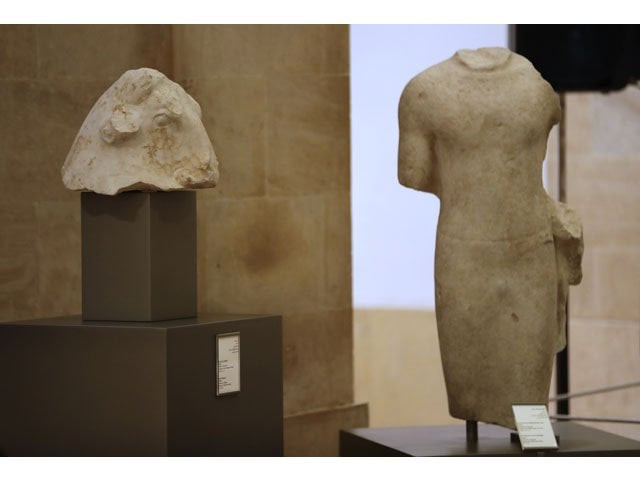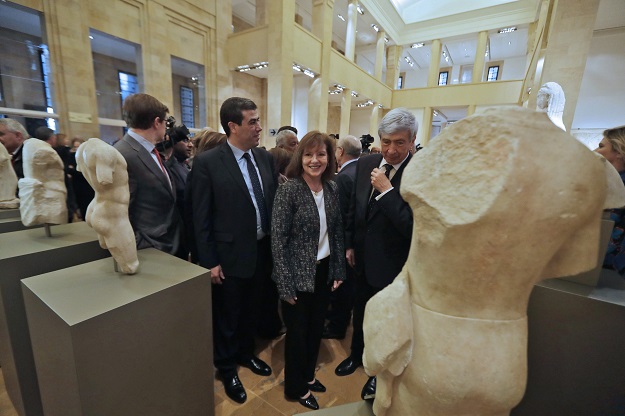Lebanon museum unveils artefacts looted during civil war
The looted artefacts include a Phoenician bull's head returned by the United States

A picture taken on February 2, 2018 shows a marble sculpture of a bull's head (L) dating back to the 4th century BC, next to another of a standing male figure dressed in a tight fitting chiton (a sewn garment) holding a calf in the left hand dating back to the 6th century BC, both part of a collection of repatriated artefacts on display during a ceremony at Beirut National Museum in the Lebanese capital. PHOTO: AFP
The life-size 4th century BC white marble bull's head, the star artefact among the works that were all looted in 1981, had been loaned to New York's Metropolitan Museum of Art (Met).
The five pieces were discovered on the Phoenician site of Eshmun, near the southern port city of Sidon, during excavations carried out in the 1960s and 1970s.
Lebanon's national museum reveals long-hidden treasures
"We are committed, as much as we can, to repatriating pieces stolen during the war," Lebanese Culture Minister Ghattas Khoury said during a ceremony at the National Museum of Beirut. Lebanon's civil war lasted 15 years from 1975 to 1990.
The five statues were stolen from a storeroom in Byblos and later surfaced "on the international antiquity market", the culture ministry said in a statement.
They were repatriated over the past two months. The bull's head had been exhibited at the Met and was spotted as part of a drive by Manhattan district attorney Cyrus Vance Jr.
 US Ambassador to Lebanon Elizabeth Richards (C) inspects repatriated marble sculptures dating back to 4th to 6th centuries on display during a ceremony at Beirut National Museum in the Lebanese capital on February 2, 2018. PHOTO: AFP
US Ambassador to Lebanon Elizabeth Richards (C) inspects repatriated marble sculptures dating back to 4th to 6th centuries on display during a ceremony at Beirut National Museum in the Lebanese capital on February 2, 2018. PHOTO: AFPThe official has made it a priority to track stolen artwork and the repatriation of the Lebanese sculptures capped months of cooperation between Beirut and the US authorities.
The repatriated works unveiled on Friday also included a 6th century BC marble statue that had ended up in the same private collection as the bull's head.
The other pieces were a 4th century BC statue that had been in the possession of a private New York collector, a 5th century BC marble torso that turned up in Germany and a statue of a young boy which customs seized at the northern port of Tripoli.



















COMMENTS
Comments are moderated and generally will be posted if they are on-topic and not abusive.
For more information, please see our Comments FAQ